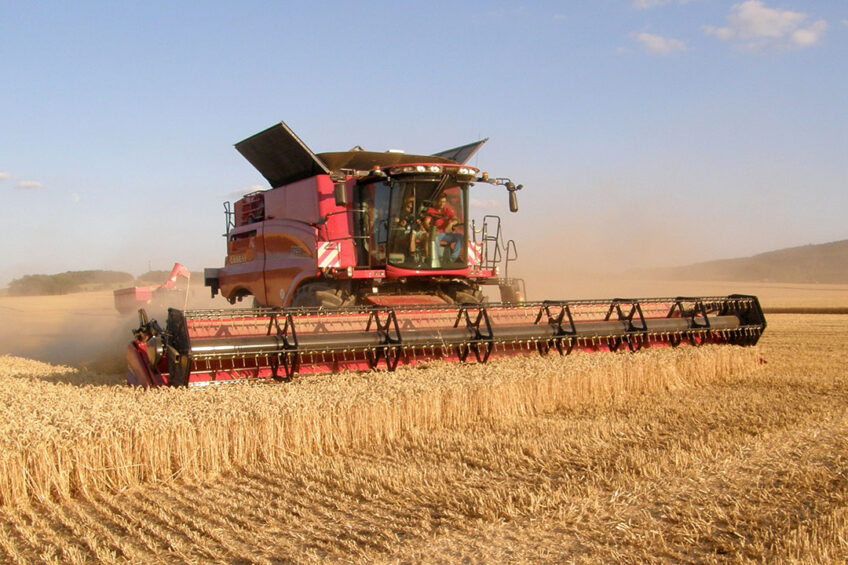Livestock farmers warned over mycotoxin levels in feed grains

Widespread drought across Europe during the 2022 grain growing season has again left livestock farmers wary as the dry spell caused higher levels of mycotoxins.
Just like last year, the drought has increased the presence of moulds which, in turn, bumped up the mycotoxin levels in new crop grains and forages.
The grim news was delivered by an analysis of crops grown this year and sampled in a joint effort between Alltech and SGS, a global leader in mycotoxin testing and certification.
The Alltech 2022 European Harvest Analysis collected data for key feed ingredients on a regional level, and the final results indicates moderate to high levels of mycotoxin risk.
Most common grains & forages tested
Over 1,000 samples of the most common grains and forages produced and used in the European livestock industry were taken as part of the work.
Samples from 20 countries
Samples have been collected from farms or animal feed production sites in 20 different countries, offering a representative picture of the contamination risk in all regions, with an overall moderate to high risk.
Mycotoxins in 100% of samples
Dr Radka Borutova, European technical support manager with the Alltech mycotoxin management team, said: “Generally, the current results look very similar to the analysis we performed in 2021, with the aflatoxin issue in central and south eastern Europe dominating the headlines and creating the greatest challenge for feed and livestock producers to manage.
Although this analysis gives a robust assessment of the mycotoxin risk in Europe this year until you actually test the ingredients that you are using in your business, it can be difficult to implement an effective control plan.
Some main results from the analysis reported that 100% of samples contained mycotoxins, with 79% containing 2 or more.
On average, each sample contained 4.5 mycotoxins with Aflatoxins, type B trichothecenes, fumonisins and emerging mycotoxins the most dominant groups detected.
A total of 67 corn samples exceeded aflatoxin regulatory limits for feed usage, which is a major concern for livestock farmers.
Aflatoxin concern
For the second year running, aflatoxin contamination of corn in central and south eastern Europe is a dominant issue for feed and livestock producers to consider as they begin to purchase and use ingredients during the coming feeding season.
Aflatoxin is a warm-weather toxin, and the widespread extreme heat conditions during the main growing season are likely to have contributed to the levels appearing in corn samples.
The mycotoxin levels in wheat and barley are less than those contained in corn. While the average number of mycotoxins detected in many corn samples is above 5, in small grains, it is typically closer to 3.
This variance is reflected in the risk equivalent quantity (REQ) and the risk of feeding these ingredients to specific species and animal groups. For instance, in sows and gilts, this year’s corn samples represent moderate to higher risk of mycotoxins, but when small grains are fed to the same animals, the mycotoxin risk is deemed to be lower.
Mycotoxins in straw
Although straw is widely used in ruminant diets and swine bedding, its contamination with mycotoxins is often overlooked. However, as testing in Denmark continues to reveal, straw samples primarily contain higher levels of mycotoxins.
DON is the leading mycotoxin of concern and is likely resulting from a combination of pre and post-harvest contamination. The problem can be exacerbated when straw is left in the field for a prolonged period, exposed to rain and dampness.
Grass & corn silage
In all regions of Europe, grass and corn silage samples contained levels of mycotoxins that would be deemed higher risk for use in dairy production. The presence of elevated levels of penicillium toxins are seen as the main contributor to this risk.
Livestock risks
Pigs
The report highlights pig producers should be aware that the corn risk level based on the average REQ for breeding sows and young piglets is deemed to be moderate to high, while the risk coming from small grains, wheat and barley, is low, with certain pockets of moderate to high risk.
Poultry
When the mycotoxin corn contamination levels are applied to poultry, the mycotoxin risk for breeding birds, broilers and layers is moderate, while the risk coming from wheat and barley is low.
Ruminants
In ruminants, the results from the corn and forage samples analysed so far indicate a moderate to high risk in dairy cows.











